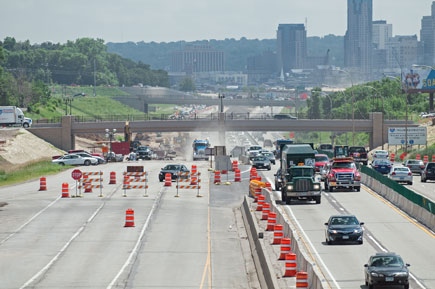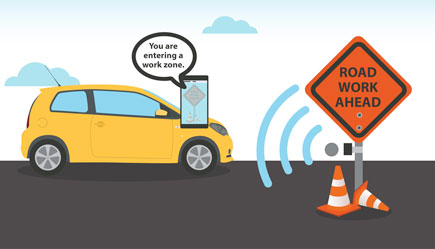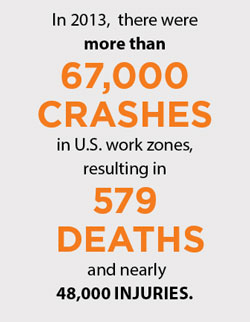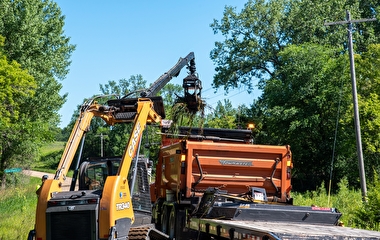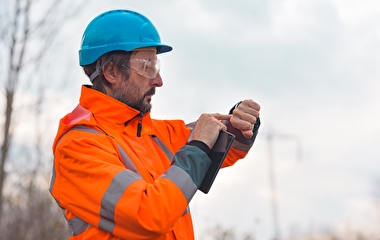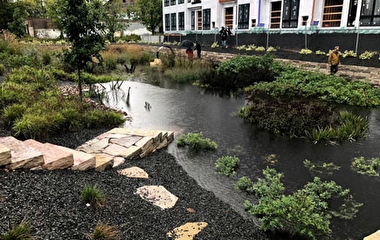Imagine that you’re driving to work as usual when your smartphone announces, “Caution, you are approaching an active work zone.” You slow down and soon spot orange barrels and highway workers on the road shoulder. Thanks to a new app being developed by University of Minnesota researchers, this scenario is on its way to becoming reality.
“Drivers often rely on signs along the roadway to be cautious and slow down as they approach a work zone. However, most work-zone crashes are caused by drivers not paying attention,” says Chen-Fu Liao, senior systems engineer at the U’s Minnesota Traffic Observatory. “That’s why we are working to design and test an in-vehicle work-zone alert system that announces additional messages through the driver’s smartphone or the vehicle’s infotainment system.”
As part of the project, sponsored by the Minnesota Department of Transportation (MnDOT), Liao and his team investigated the use of inexpensive Bluetooth low-energy (BLE) tags to provide in-vehicle warning messages. The BLE tags were programmed to trigger spoken messages in smartphones within range of the tags, which were placed on construction barrels or lampposts ahead of a work zone.
The researchers also developed two applications for the project. First, they designed a smartphone app to trigger the audio-visual messages in vehicle-mounted smartphones entering the range of the BLE work-zone tags. A second app allows work-zone contractors to update messages associated with the BLE tags remotely, in real time, to provide information on current conditions such as workers on site, changes in traffic, or hazards in the environment.
Field tests proved the system works. “We found that while traveling at 70 miles per hour, our app is able to successfully detect a long-range BLE tag placed more than 400 feet away on a traffic barrel on the roadway shoulder,” Liao says. “We also confirmed the system works under a variety of conditions, including heavy traffic and inclement weather.”
“This was a proof of concept that showed that smartphones can receive Bluetooth signals at highway speeds and deliver messages to drivers,” says Ken Johnson, work-zone, pavement marking, and traffic devices engineer at MnDOT. “Future research will look into how we should implement and maintain a driver alert system.”
This future work includes using the results of a human factors study currently under way at the U’s HumanFIRST Laboratory to create recommendations for the in-vehicle message phrasing and structure. Then, researchers plan to conduct a pilot implementation with multiple participants to further evaluate the system’s effectiveness.
According to MnDOT, another phase of the project may investigate how to effectively maintain the BLE tag database. This phase could also investigate implementation options, such as how MnDOT can encourage drivers to download and use the app.
